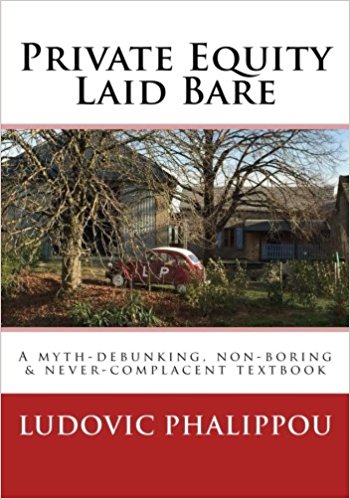Private Equity findings is a very nice magazine. The link below takes you to a recent issue which features my work and a critique of it by Professor Steve Kaplan:
https://www.collercapital.com/sites/default/files/Private%20Equity%20Findings%20Issue%2017.pdf
Here is my reply to Kaplan points:
- He says that the analysis is misleading because I chose an unusual time period over which to measure performance. Here is what I actually do in my paper: I point out that if one chooses the benchmark Kaplan used to defend loud and hard (the S&P 500), from 2006 onwards returns are about the same as S&P 500 for US PE. His reply says, yes, but if I choose other starting date like 2009 then returns would be slightly above S&P 500 and not below. I believe it is what I wrote, isn’t it? What I actually wrote is that they are about the same whatever you choose post 2006. I did not write they are below no matter when you start after 2006. I am quite puzzled by the use of the word ‘misleading’.
- He argues that if you take out some sectors of private equity that did not do well (mostly oil and gas) but keep them for public equity, then private equity looks relatively better. Well, yes, it will, by definition. I note in passing that the proposition that private equity real estate is comparable to REITs is rather surprising given the very different level of leverage, differences in targeted assets etc. Real estate, infrastructure, natural resource private equity funds are all doing LBOs. Indeed I do not see the point of taking them out. But even if we take them out the conclusion is not even different, the returns are still ‘about’ the same, as I said. So, what’s the problem?
- He says that I cherry picked an index in the mid cap space that has done better than others. I did not cherry picked it, I am showing what Cambridge Associates (CA) is showing and I do that so that everyone can see for themselves (I do not do any calculations myself). CA has always used S&P600 as a mid cap index with a view that it is more relevant for PE, which is true. BUT, I show the results with other mid cap vehicles like DFA funds to have a passive one and T-Rowe Price to have an actively managed one. Results are the same. He says: but if you choose the worse performing mid cap index (Russell 2000) then results are better for PE. And you should use Russell 2000 because it is the most used one. Yes, it is the most used benchmark because it has the worse performance. That’s why practitioners love it. But, what I do not get is why, we, academics, impartial people, should use the lowest performing benchmark? I am confused.
- There are co-investments and these do better. He says as much as 25% of the PE portfolios are co-invested. Again, would be good to stick to what I wrote. The paper is not about whether it is good or not to invest in PE, it is what we know about performance of PE funds and why consultants and some academics show numbers and spin things that do not square with reality re that specific question. The same apply for his next point on diversification. I never wrote anywhere that there are no good reasons to invest in PE. That said, re co-inv and other side vehicles the latest paper by Lerner and Schoar seem to contradict this assertion of Kaplan and the stats I saw on co-inv seems to say that over the time period I studied, co-inv were less than 5% of investor portfolios on average.
- Then there is the point that society benefits a lot from PE, and therefore it is all good. Again, my paper is not about whether PE should be banned or not. Would be good not to move goalposts.
- And then there is a point about something I derived in the working paper version but took out in the published version. The 11% is indeed if earnings are not sufficient to pay down debt over time. It was to keep it simple and avoid having to make assumptions on margins and the like. If we assume some margins, borrowing cost etc., and full cash sweep as suggested by Kaplan then yes, organic growth does not need to be 11%. I do not know the assumptions he used to get to 2.4% p.a., I was at 6.5% for what I thought were reasonable margins, cost of debt etc.
